How To Create a Social Media Community That Stands Out
Social media communities are groups sharing common interests on different platforms. Learn how to grow and manage one using experts' tips.


According to HubSpot, 86% of social media managers believe building an online community is important for a successful social media strategy.
And with 27% of social media users actively participating in online communities—jumping to 40% among Gen Z and Millennials—the question for today’s leaders becomes less “Should we be on social?” and more “How important is social media for our organization’s future growth?”
Communities are evolving into a strategic marketing channel, not just an engagement tactic. They accelerate brand trust, strengthen retention, improve product feedback loops, and amplify advocacy, especially in organizations where social is becoming a measurable part of revenue influence.
In this article, I will explore how building a social media community can elevate your social media marketing strategy, strengthen brand affinity, and drive long-term social media ROI.
Key takeaways
-
What is a social media community? A social media community is a structured space where brands and audiences build relationships through meaningful interaction, trust, and shared value.
-
How to build a community on social media? Building a strong community requires designing safe spaces for participation, fostering trust, and consistently recognizing and empowering members to engage.
-
What metrics matter? Community metrics evolve from tracking growth (members, activity) to engagement (quality conversations) and finally impact (retention, advocacy, revenue).
-
Brand community examples: Brands like Atlassian, Lego, and Sephora show that successful communities empower members with resources, co-creation opportunities, and authentic peer-to-peer influenc
What is a social media community?
A social media community is a group of people who interact with each other on social media platforms around common interests, shared goals, or values.
These communities can form on various platforms, such as Facebook, LinkedIn, Twitter, Reddit, and others, and they offer a space for members to share content, engage in discussions, support each other, and build relationships.
Recently, we hosted a webinar with Christina Garnett, community builder, CX strategist, and author, where she shared invaluable insights on what it truly takes to build and sustain a thriving brand community.
From the psychology of engagement and the challenge of activating passive members, to evolving community metrics, and customer advocacy, Christina offered a fresh perspective on why communities matter now more than ever.
Difference between social communities and social audiences
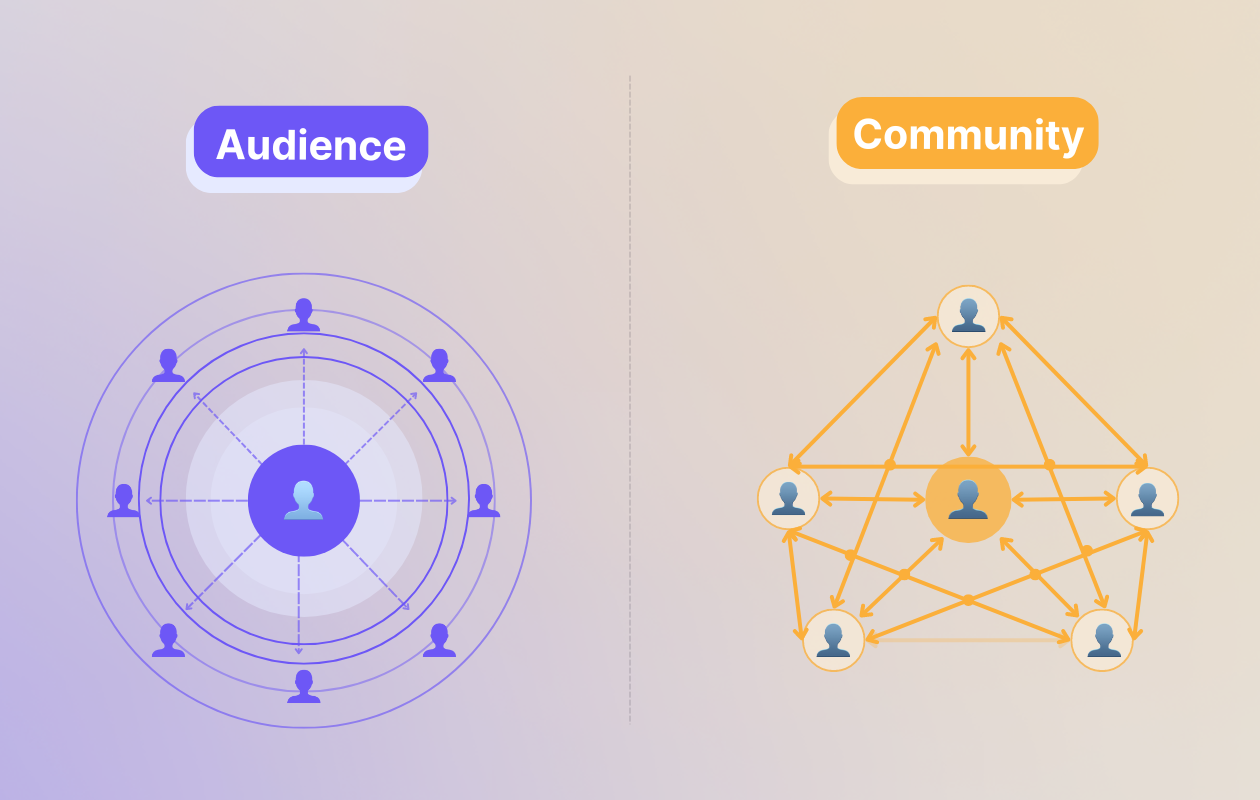
Your community might be a part of your audience, but it extends to a deeper brand connection.
If you want to build a community, it needs to be an oasis… a safe space where people don’t feel sold to, judged, or ignored. - Christina Garnett
Social communities are groups of individuals who actively interact with each other and with your brand, emphasizing community engagement as a key aspect.
Members participate in discussions, share content, and contribute to the group’s overall experience, often driven by a shared purpose or interest. They have a sense of belonging and are more deeply involved in the interactions within the community.
In contrast, social target personas refer to a broader group of people who follow or consume your content but may not engage deeply. They might view your posts, listen to your updates, or watch your videos, but their interaction is usually more passive.
Unlike community members, they do not typically contribute to discussions or share a common goal, making their engagement level lower and less interactive.
For example: consider a brand’s Facebook Group (community) where members actively discuss new products, share feedback, and participate in exclusive events.
In contrast, the brand’s broader social media followers (audience) may like or share posts but rarely engage in discussions or participate in activities. The group members are highly engaged and involved, whereas the broader followers may only passively consume content.
Why does having a community on social media matter?
For organizations where social media is becoming an increasingly important channel, community-building extends far beyond follower growth. It creates a structured environment where high-value conversations, feedback loops, and peer-to-peer trust develop organically, often influencing product adoption, brand affinity, brand reputation, and long-term loyalty.
Here are some strategic benefits of building a community:
Increased brand discoverability
Promoting products and services through social channels boosts discoverability, especially when your brand is actively present in conversations already happening within communities.
If social media is becoming a strategic channel for your business, community participation helps you:
- show up in relevant discussions
- position your company as a credible resource
- increase brand salience organically
Focusing on community-building skills—and having a community manager capable of fostering those spaces—helps brands strengthen their presence and connect more meaningfully with the audiences that matter most.
Access to feedback
Building online communities allows businesses to build relationships with people who have a genuine interest in their brand. These engaged users often provide valuable feedback based on their experiences with the products. This feedback is crucial for continuous improvement across different areas, from product development to customer service.
For example, a popular cold email tool SmartLead has an active community on Slack with over 7.5K members. They have a channel in which users can request features and the SmartLead team responds to them directly.
Ask your customers how they feel when using your product, what their needs are, and if there’s anything missing. Then take those insights and integrate them into a webinar, a tutorial, a course, etc). - Christina Garnett
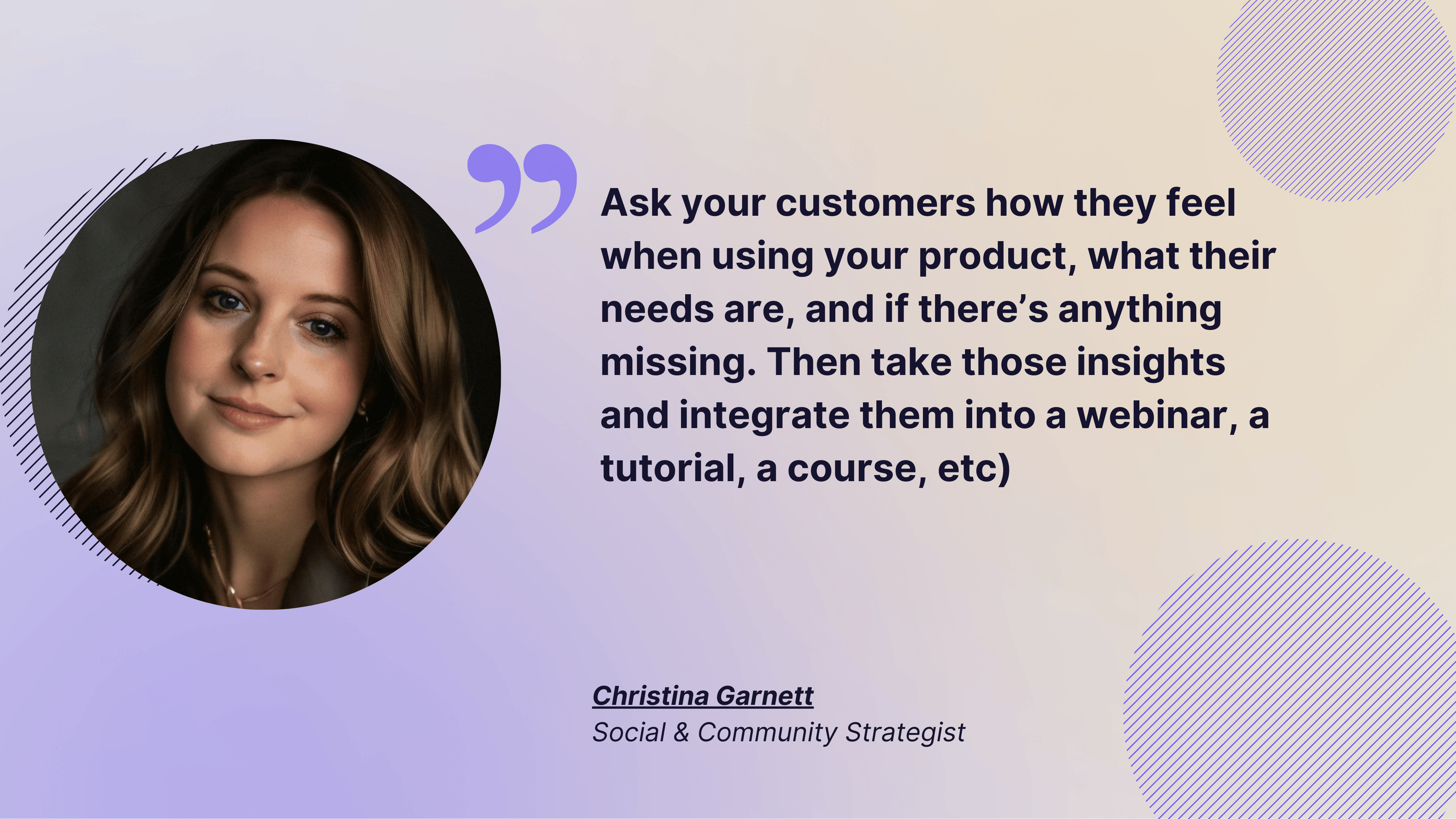
Opportunity to offer increased value
Modern consumers choose brands not just for what they sell, but for the values and experiences they provide.
If your organization is evaluating how social media can deliver deeper customer value, communities become a strategic asset.
They allow brands to:
- express their values transparently
- share knowledge and resources at scale
- create experiences that go beyond the functional product
This strengthens the emotional connection with customers, improving brand loyalty and long-term brand affinity.
How to build a community on social media?
Community building is a challenging task that demands significant effort from team members within social media departments.
Engaging with your connections and providing value is non-negotiable, a top community-building strategy to ensure active participation and sustained growth.
Here are a couple of community-building strategies that are bound to help you increase brand loyalty and gain a positive brand image overall.
Be authentic and transparent
To turn your audiences into loyal fans and customers, authenticity with transparency is the key.
The idea is to help your followers see real value in being part of your community.
An effective social media community engagement strategy involves sharing valuable insights, providing support, and fostering genuine interactions.
Also, make sure to avoid salesy messages and not make it about you as a brand but about your audience.
If you make it more about your brand than your audience, they may feel disconnected and less inclined to engage with your content, leading to a decline in trust and loyalty.
Focusing on their needs and interests will help you build trust through honest communication, which, in turn, will encourage more meaningful engagement and long-term growth for your community.
Think of how potential customers will feel about your brand after seeing your interactions with your other customers. If they see appreciation, they’ll want to have that too. - Christina Garnett
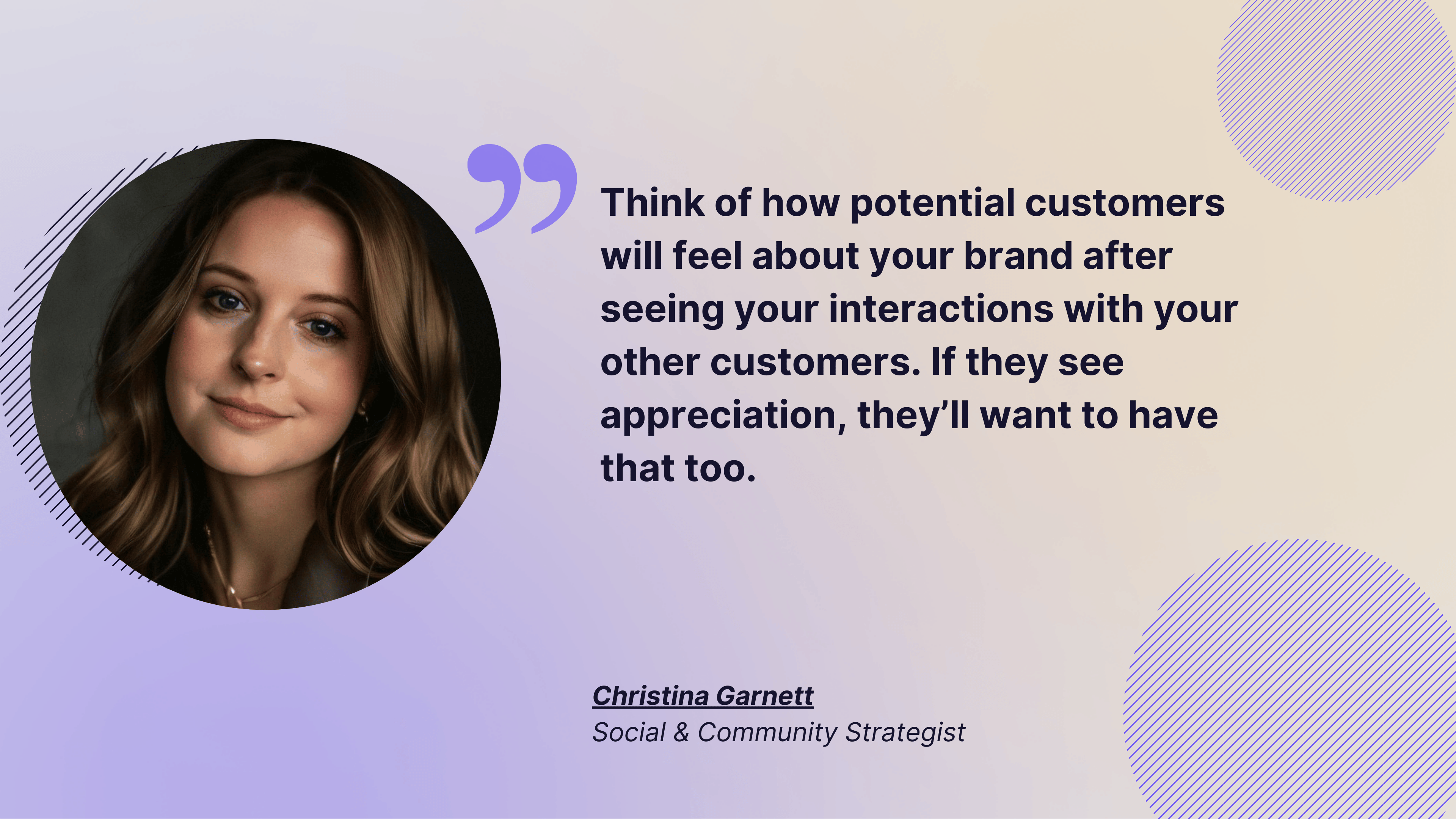
Prioritize storytelling over trend-chasing
On platforms like TikTok, following trends can be crucial for visibility and social media engagement.
However, for other platforms such as LinkedIn and Instagram, storytelling and behind-the-scenes content resonate more with audiences.
Using GIFs, emojis, quote images, and memes can enhance your storytelling, making it more engaging and relatable.
People appreciate authentic, relatable stories that provide a deeper insight into the brand, its values, and its people.
Sharing behind-the-scenes moments, customer success stories, and the journey of your brand will help you foster loyalty and trust, leading to stronger brand identity and more organic interactions.
So, if you were wondering how to increase community engagement on social media, this is a great starting point.
Create a sense of authenticity. I always try to inject a sense of personality, humor, and sarcasm into everything that I do, ensuring it becomes an enjoyable experience rather than just something work-related.
I also have some high content moderation standards within my communities so that the quality of the content remains at the top level.
Most people want to contribute because they want to give something back, which is a solid base for reciprocal relationships.” says Matt Navarra - Social Media Consultant
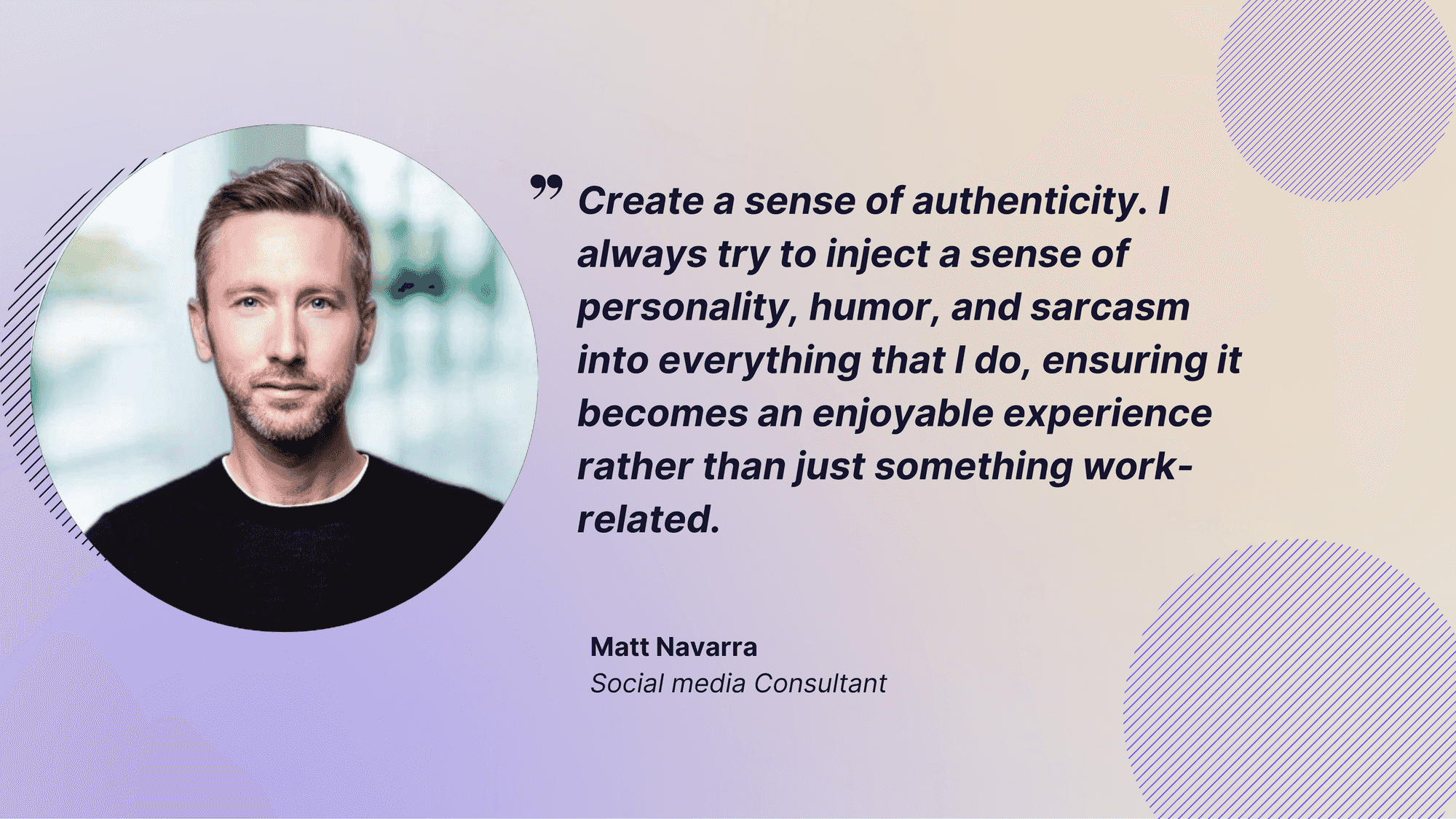
Make people feel seen
Humans like to be heard and valued, and that’s one of the most valuable focus points when you aim to create a community for your brand.
The goal is to create a space where people feel acknowledged and appreciated. This involves actively listening to their feedback, responding to their concerns, and celebrating their contributions.
Cultivating a sense of community can transform passive followers into active, dedicated members who advocate for your brand and contribute to its growth.
To foster a sense of community, inclusion, and validation are of the essence, as they will help enhance engagement and build trust and loyalty.
Providing personalized interactions and showing genuine interest in your audience’s opinions will make them feel valued and seen, reinforcing your image as a trustworthy brand.
Based on the insights we got, people also like to see non-promotional content that can actually help them solve a particular problem. Other than that to build a social community, you can also leverage engaging stories that relate to your audiences.
The goal is to genuinely help your followers solve a problem by incorporating your product or service as part of the solution, rather than merely promoting it.
Treat your customers as you’d treat influencers. Ask them to participate in a webinar or contribute to a blog post. Because they have actual experience with your product or services, they are your biggest advocates. - Christina Garnett
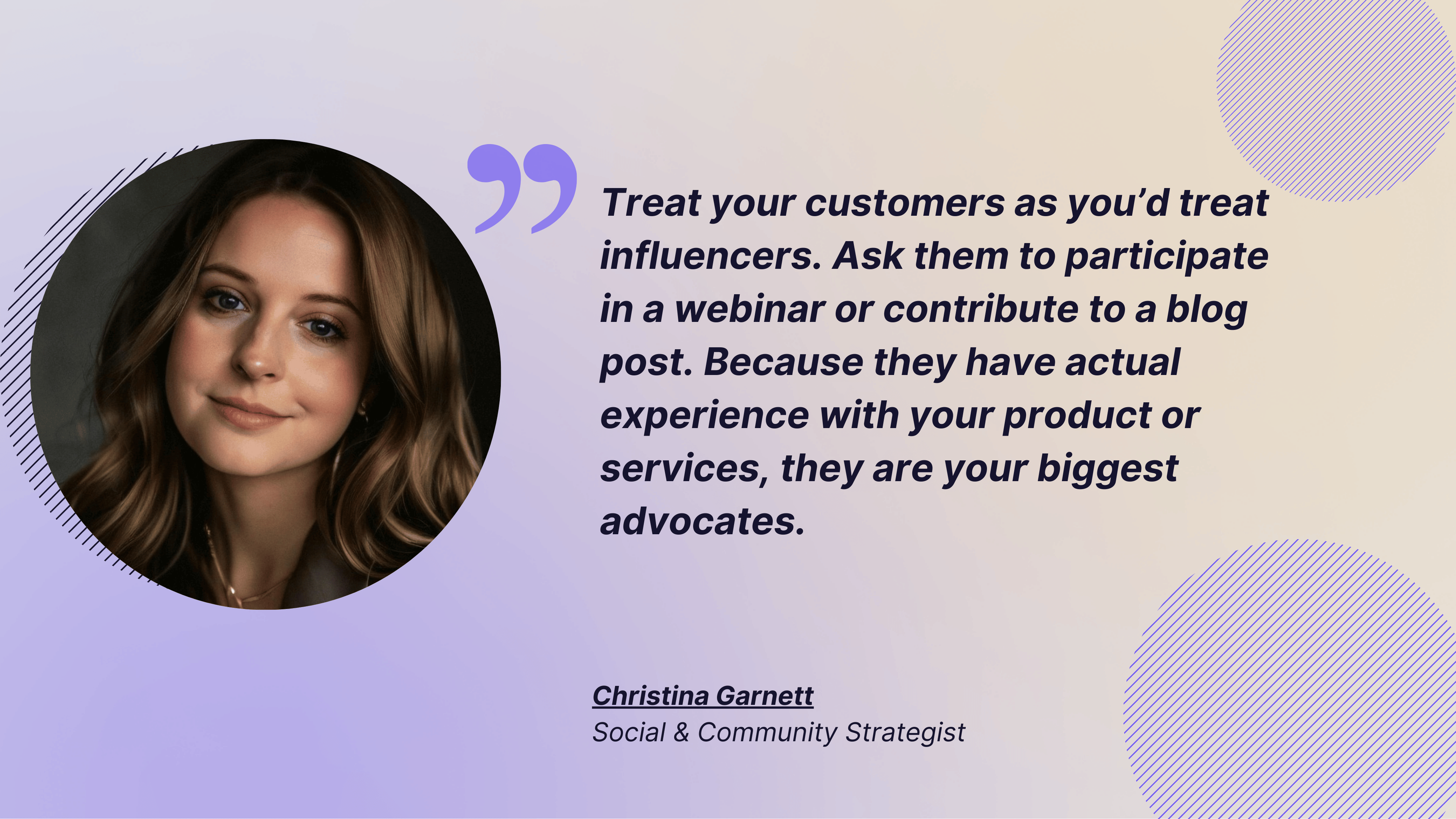
Furthermore, you can keep your audience engaged by using social media best practices like sharing updates about new features, product enhancements, and upcoming releases. Highlight how these updates address common challenges and improve user experience.
Sharing behind-the-scenes looks, user testimonials, and case studies can also create a deeper connection with your audience, making your content more relatable and valuable.
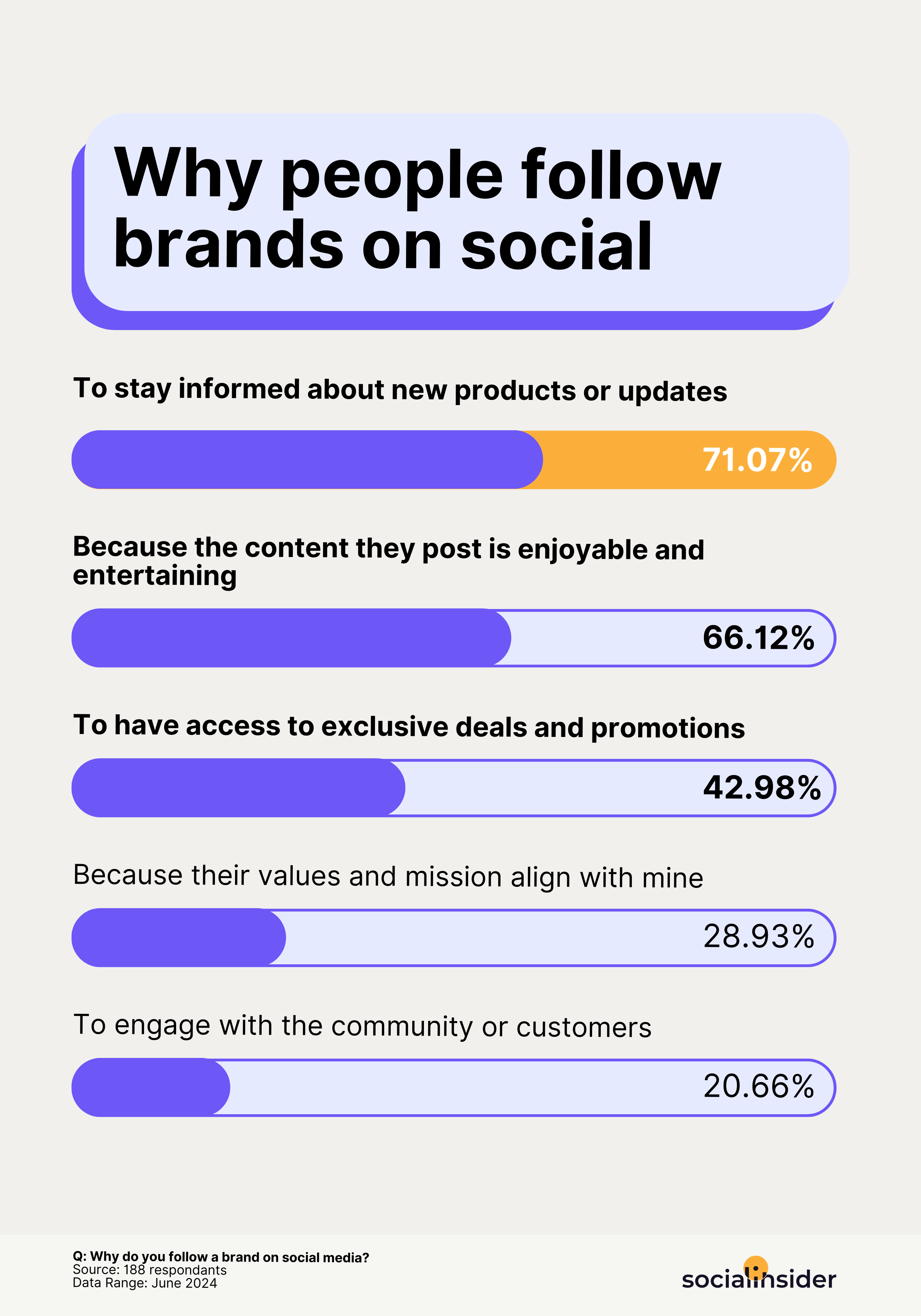
Partner with influencers
According to a study, 69% of consumers trust influencer recommendations.
While you can directly use influencers to promote your products, you can also leverage them to promote your community.
Creating content in collaboration with influencers can enhance community awareness and engagement.
Collaborating with influencers who align with your brand values and have a genuine connection with their followers can enhance the level of thrust within your own community. They can create engaging content that highlights the unique aspects of your brand.
Additionally, influencers can facilitate discussions, host live sessions, and actively participate in the community, fostering a sense of credibility.
For example, Lululemon collaborates with micro-influencers on Instagram to build brand awareness and engage its audience.
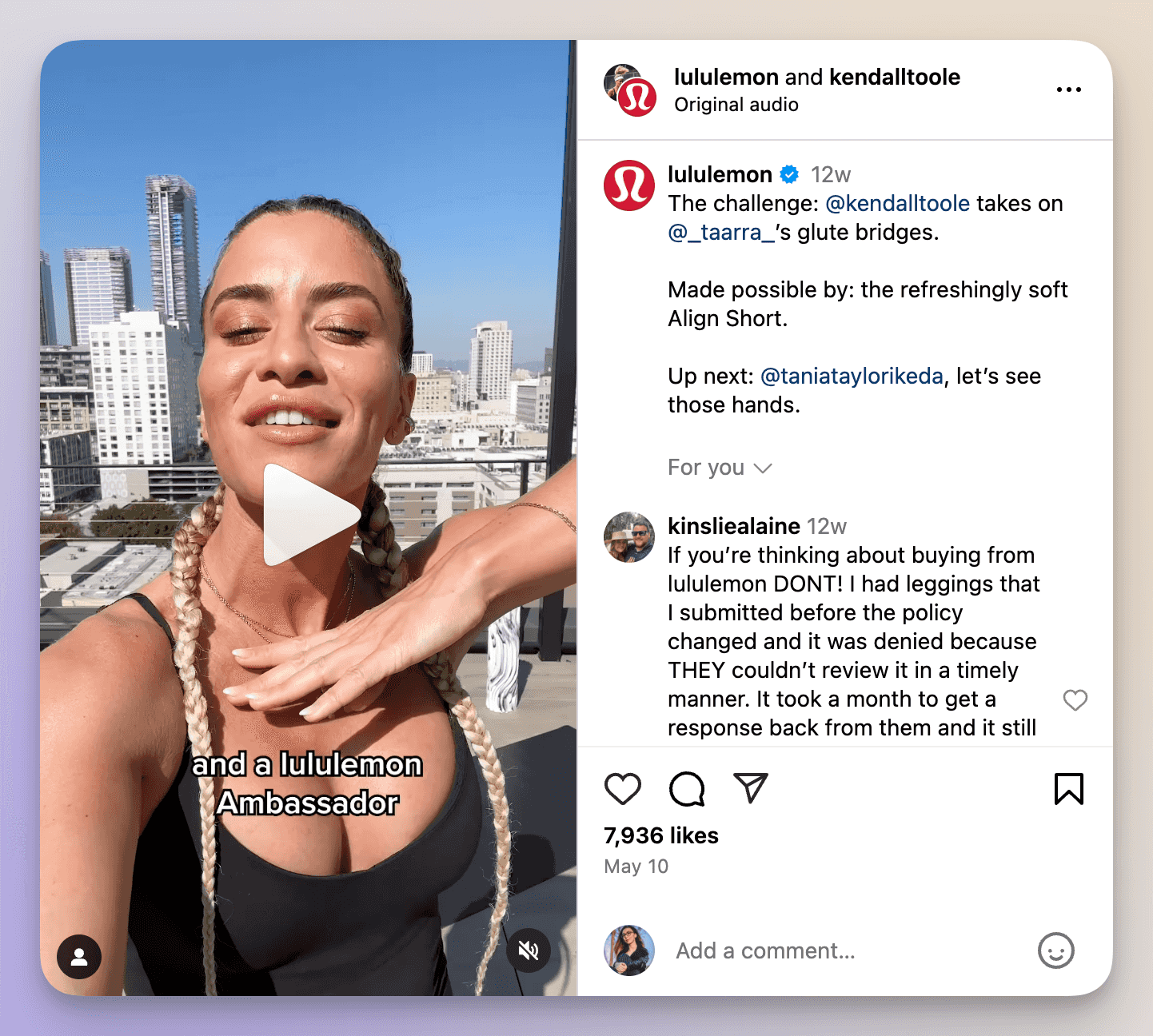
These influencers, passionate about fitness and wellness, align with Lululemon’s values of empowerment and healthy living, showcasing how the brand’s products fit into their active lifestyles.
How to build a closed brand community?
Building a closed community, such as a Facebook group, requires careful planning and execution.
Linking to your company’s Facebook page from personal profiles is crucial to building the community and maximizing reach across various social media platforms.
Here are 5 steps to effectively create and manage a specific community:
#1. Establish your audience segment
You need to know who you want to connect with while building a community online.
Understand your member’s personas by considering demographics, interests, and their relationship with your brand.
Create your content and engagement strategies to address their specific needs, challenges, and goals to build a meaningful and active community.
#2. Find a pain point or challenge
Identify a common pain point or challenge your audience faces and build your closed community around providing value or solutions to that issue.
Research your members’ habits, motivations, pain points, and needs. Client surveys and feedback received via social media platforms can be particularly useful for this.
#3. Create a communication strategy plan
When thinking about launching social networking communities, you need to consider that you’ll have to develop a clear communication strategy.
Choose your social community platform, decide if you will partner with any influencers or experts, and create a timeline for your community activities and content.
According to our research, Facebook groups still hold the top position for building communities, followed by Discord and WhatsApp.
- Have ambassadors and moderators (from your team) with expert label: Choose team members to serve as ambassadors and moderators who can lead discussions and uphold community standards. Present them as experts to build authority and trust within the community. Their responsibilities include sparking conversations, sharing insights, and creating a respectful and engaging environment.
- Use experts from outside or give the people from inside a chance to talk and be an expert in a subject: Partner with external influencers and experts to host sessions and share valuable insights, improving the community’s credibility. Alternatively, encourage internal team members and active participants to showcase their expertise, allowing them to lead discussions and contribute content.
- Don’t introduce too much of your product; use more “soft-sell”: Focus on providing value and building relationships within the community rather than overtly promoting your products. Use a “soft-sell” approach by subtly integrating your products into discussions and content where relevant, ensuring that the primary focus remains on addressing the community’s needs and interests.
#4. Set goals for online community building
Define what you want to achieve with your community. Determine which stage of the marketing funnel the community is supposed to boost, whether it’s brand awareness, consideration, or conversion.
#5. Define success metrics
Establish how you will measure the success of your community. Key metrics might include member growth, post-engagement, and response time. These metrics will help you track progress and make necessary adjustments to your strategy.
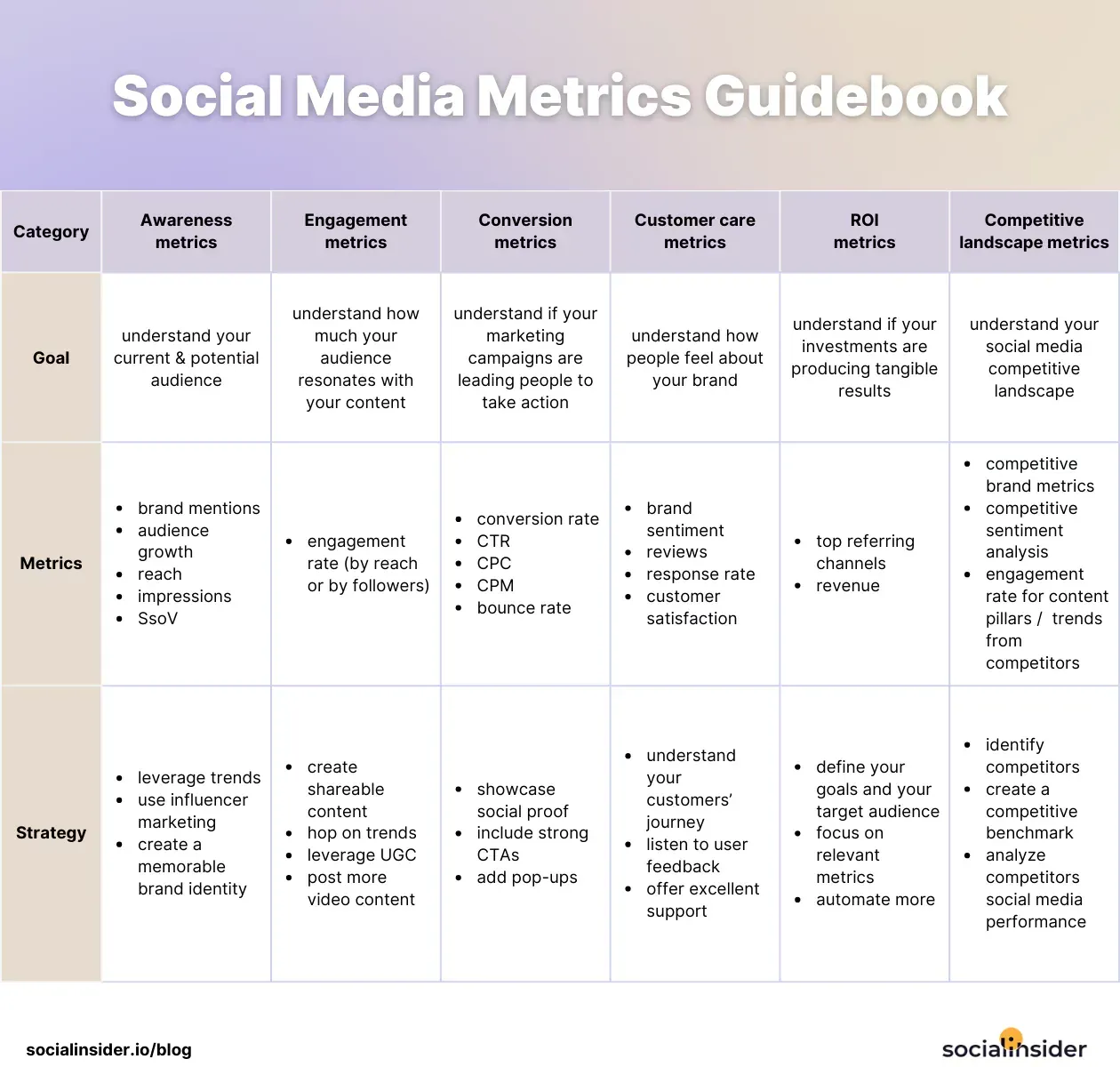
As Christina highlights:
The right community metrics to measure depend on the community’s stage.
- Foundation stage → members, conversations;
- Engagement stage → quality & value of conversations.
- Impact stage → business outcomes (feature requests, advocacy).
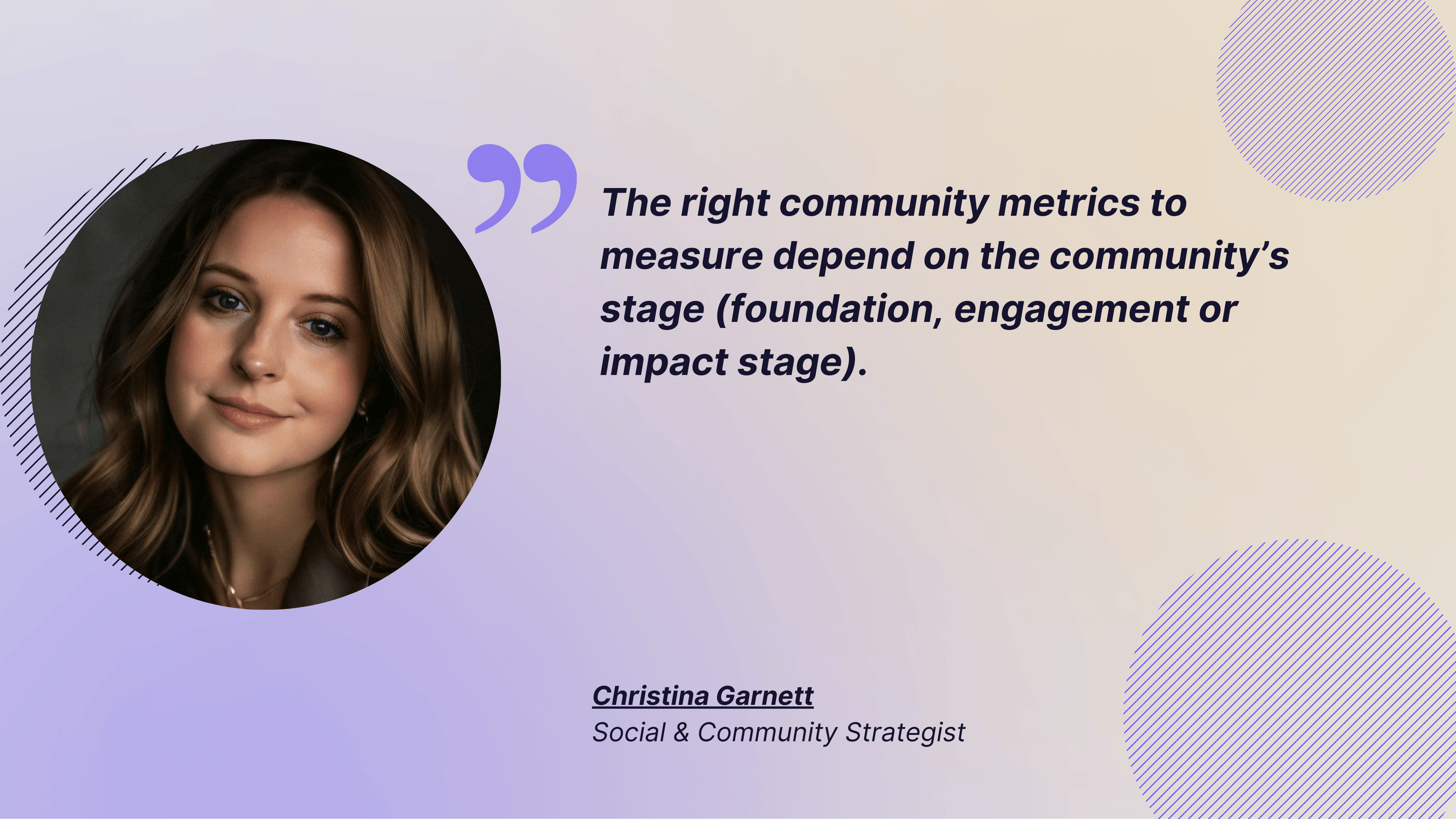
3 examples of successful social media brand communities
To better understand how strong communities are built and nurtured, let’s look at three brands highlighted by Christina Garnett during our webinar. Each uses a different approach, but all succeed in turning members into engaged, empowered advocates, showing how communities can support brand and product strategy, not just marketing.
Atlassian – creating a center of excellence
Atlassian has built one of the most comprehensive B2B communities in the tech space. Their Center of Excellence acts as a go-to hub where users can access best practices, documentation, discussions, and events, all structured to help users extract maximum value from their tools.
For brands where community can support onboarding, adoption, or education, Atlassian demonstrates how structure and clarity can directly impact product success and user satisfaction.
Lego – co-creation through community
Lego’s community is legendary because it goes beyond product use—it enables co-creation. Through its online platform, fans can propose new Lego kit ideas and vote on those submitted by others. If a concept gets enough community support, Lego actually brings it to life. This democratization of product development empowers members, fuels innovation, and makes participants feel like true partners in the brand’s journey. For B2B brands, this approach is a powerful example of how customer feedback can drive product roadmaps.
Sephora – Customers as Influencers
Sephora has built a peer-powered community where customers share tutorials, reviews, and product insights, not because they’re paid to, but because the platform gives them space to showcase their expertise.
This model proves that when customers feel seen and valued, they naturally become a trusted extension of the brand’s voice—something many organizations aim to achieve as they rethink how to scale advocacy authentically.
👉 The key takeaway: whether you centralize resources (Atlassian), empower co-creation (Lego), or cultivate peer expertise (Sephora), the communities that succeed are those that make members feel valued, heard, and part of the brand’s evolution.
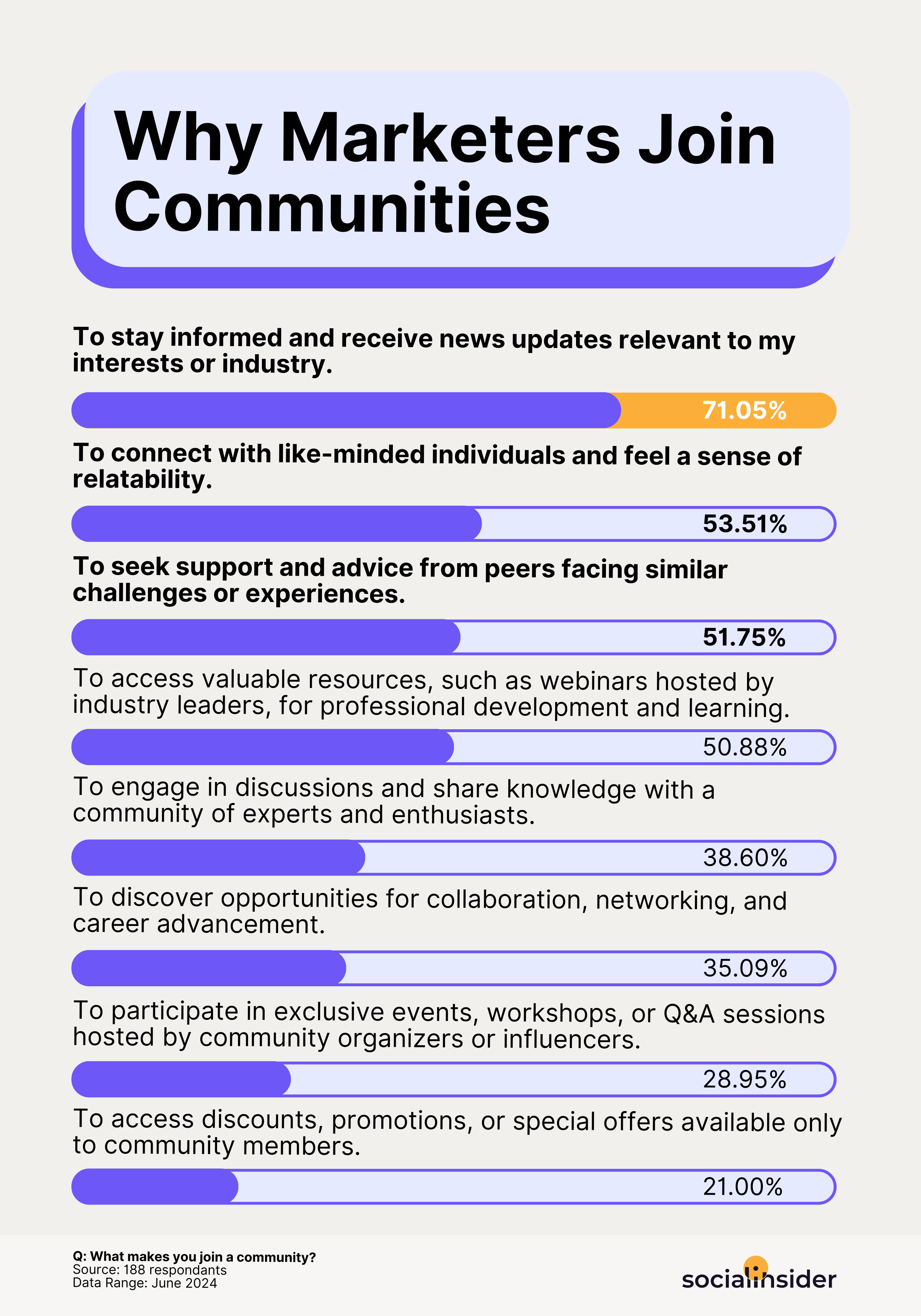
Final thoughts
In an era where AI is automating more touchpoints than ever, human connection has become a differentiator.
Communities provide the structure for those connections, deepening engagement, strengthening loyalty, and giving brands a scalable way to listen, learn, and grow alongside their audience.
For leaders evaluating the strategic role of social media, communities aren’t just about engagement. They’re about creating environments where insights, relationships, and advocacy compound over time.
When built intentionally, with the right platform, authentic engagement, and a member-first approach, a community becomes a long-term brand asset that supports everything from product development to retention.
FAQs on social media communities
What are the best platforms for building a community?
For building a community, choosing the right platform is crucial based on your audience and social media goals. Here are some top options:
- Facebook Groups: Ideal for broad reach and engagement, with features to foster interaction.
- Discord: Excellent for real-time chat and building communities around specific interests.
- WhatsApp: Great for small, tight-knit groups needing quick, personal communication.
- Slack: Suitable for professional and project-based communities with robust collaboration tools.
Depending on your needs, platforms like Reddit, Mighty Networks, or Telegram might also be valuable.
What is community-based marketing?
Community-based marketing (CBM) is a strategy focused on fostering relationships with customers by building a sense of community around a brand or product.
Unlike traditional marketing, which centers on selling, CBM emphasizes creating a thriving community. It is built on three pillars: authenticity, engagement, and two-way conversation:
- Authenticity: people seek genuine connections, and brands that authentically engage with their audience build trust.
- Engagement: meaningful conversations with your audience.
- Two-way conversation: brands give their customers a voice, promoting a dynamic two-way dialogue.
Why is community building important?
Community building is essential for fostering customer loyalty and engagement.
When customers feel connected to a brand, they are more likely to stay loyal, actively engage with content, and provide valuable feedback that can drive product improvements. This engagement leads to higher visibility and a stronger reputation for the brand.
Moreover, communities built on authenticity and transparency establish trust, making customers more likely to support and recommend the brand. These communities also create support networks, reducing the burden on customer service and increasing satisfaction.
Ultimately, a loyal and engaged community drives long-term growth and advocacy for the brand.
Analyze your competitors in seconds
Track & analyze your competitors and get top social media metrics and more!
You might also like
Improve your social media strategy with Socialinsider!
Use in-depth data to measure your social accounts’ performance, analyze competitors, and gain insights to improve your strategy.





